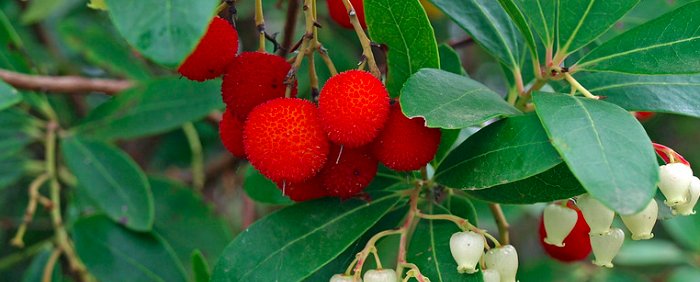
The health benefits of Arbutus
Fight against diarrhoea
It is the pectin contained in the arbutus that will easily regulate the transit in case of acute diarrhea .
Prevents cardiovascular disease
The action of polyphenols is proven to fight against many pathological conditions such as cardiovascular diseases.
Diuretic
Both the fruit and the leaves of the plant are effective in combating water retention by allowing good elimination of standing water in the body.
Attention, the arbutus is slightly toxic, eaten raw in large quantities, it can induce colic and vomiting.
Nutritional values of arbutus
Per 100g of arbutus
| Water | 68.2 g |
| Carbohydrates | 20g |
| Fat | 0.4 g |
| Protein | 0.7 g |
| Energy | 86.4 kcal |
| Energy | 361.1 kJ |
The main nutrients in arbutus
Tannins
Acting as antioxidants, the tannins found in the arbutus will be very effective in fighting cellular aging and trapping free radicals.
Vitamin C
Also antioxidant, vitamin C will also play a role in the regulation of cholesterol synthesis and limit the risks of cardiovascular disease.
Using the arbutus in the kitchen: some recipe ideas
The taste of arbutus
The flavor is sweet and slightly tart. However, it is not a very strong fruit.
How to choose the arbouse well?
The ripe arbutus is orange-red, and its skin is rough. Its flesh is soft and floury and contains many small seeds. The arbutus measures on average 1 to 3 cm and weighs around 15g. It is mainly found in autumn on the markets.
How to properly store the arbutus?
Very fragile, the arbutus will keep for a few days in the vegetable drawer of the refrigerator.
How to cook the arbutus?
One can consume the raw or fermented arbutus in the form of alcoholic drink.
A short history of the arbutus
It can be confused with the lychee, however the arbutus is native to the Mediterranean basin and not from Asia.